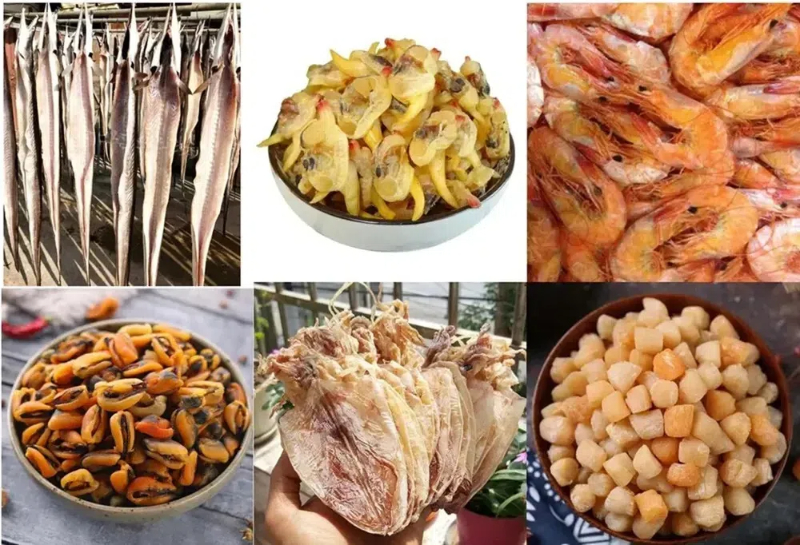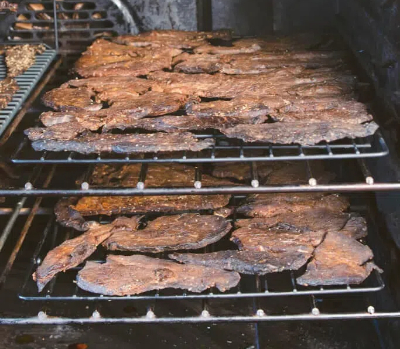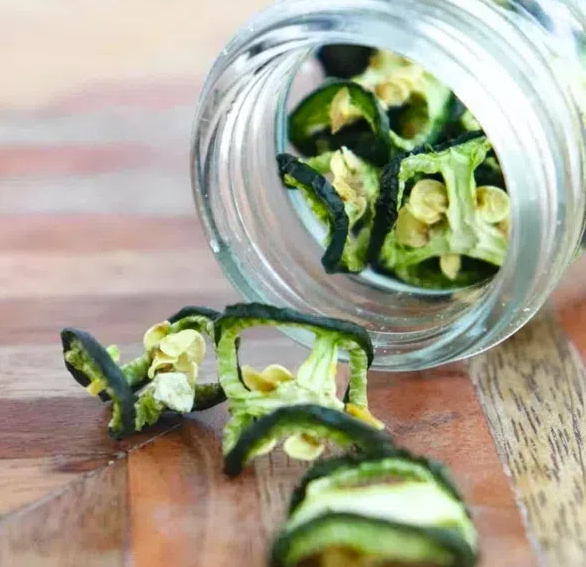
Content Menu
● Understanding Food Dehydration
● Benefits of Using a Food Dehydrator
● Best Foods to Dehydrate
>> Fruits
>> Vegetables
>> Meats
>> Herbs
>> Other Foods
● Preparation Tips
● Dehydration Process
● Creative Uses of Dehydrated Foods
● Storing Dehydrated Foods
● Common Mistakes to Avoid
● Conclusion
● FAQs
>> 1. What types of fruits can I dehydrate?
>> 2. How do I prepare vegetables for dehydration?
>> 3. Can I dehydrate cooked meals?
>> 4. How long does it take to dehydrate food?
>> 5. How should I store my dehydrated foods?
● Citations:
Food dehydrators are versatile appliances that allow you to preserve a variety of foods by removing moisture, which helps extend shelf life and maintain flavor. This article will explore the best foods to put in a food dehydrator, how to prepare them, tips for successful dehydration, and additional creative uses for your dehydrator.

Understanding Food Dehydration
Dehydration is the process of removing water from food to inhibit the growth of bacteria, yeasts, and molds. By lowering the moisture content to between 5% and 20%, you can effectively preserve foods for extended periods. Dehydrators work by circulating warm air around the food at controlled temperatures, typically between 95°F (35°C) and 160°F (71°C), depending on the type of food being dehydrated.
Benefits of Using a Food Dehydrator
- Preservation: Extends the shelf life of fruits, vegetables, meats, and herbs.
- Nutrient Retention: When done correctly, dehydration preserves nutrients better than other preservation methods like canning.
- Convenience: Dried foods are lightweight and easy to store, making them ideal for camping or hiking.
- Flavor Enhancement: Concentrates flavors in fruits and vegetables, making them delicious snacks.
- Cost-Effective: Dehydrating your own food can save money by utilizing surplus produce or buying in bulk.
Best Foods to Dehydrate
Here's a comprehensive list of foods that dehydrate well:
Fruits
- Apples: Slice thinly for apple chips or make fruit leather.
- Bananas: Cut into rounds for banana chips.
- Mangoes: Slice thinly; they become sweet and chewy.
- Pineapples: Cut into rings or chunks; great for snacking.
- Strawberries: Slice or leave whole; perfect for cereals or trail mixes.
- Peaches: Halve and pit before dehydrating.

Vegetables
- Carrots: Slice into rounds or sticks; great for soups.
- Zucchini: Cut into thin rounds or strips; can be used in salads or as snacks.
- Tomatoes: Slice for sun-dried tomatoes or make tomato powder.
- Bell Peppers: Chop into pieces; excellent for adding to dishes later.
- Onions: Slice thinly; perfect for seasoning.
Meats
- Beef Jerky: Use lean cuts; marinate before dehydrating.
- Chicken: Slice thinly; great for adding to soups or salads.
- Fish: Salmon or tuna can be dehydrated into jerky.
Herbs
- Basil, Oregano, Thyme: Dry these herbs to use in cooking later.
Other Foods
- Nuts and Seeds: Can be soaked and then dehydrated for better digestibility.
Preparation Tips
1. Uniform Slicing: Ensure that all pieces are cut to a similar thickness to promote even drying. Aim for slices about 1/4 inch thick. Using a mandoline slicer can help achieve uniformity[1].
2. Blanching Vegetables: Some vegetables benefit from blanching (brief boiling followed by ice water) before dehydration to preserve color and nutrients[1].
3. Avoid Mixing Flavors: Dehydrate similar flavored items together (e.g., fruits with fruits, vegetables with vegetables) to avoid flavor contamination[1].
4. Use Non-Stick Sheets: For sticky foods like fruit purees, use non-stick sheets designed for dehydrators.
5. Marinating Meats and Vegetables: Enhance flavor by marinating meats or vegetables before dehydration. For example, eggplant can be marinated with liquid amino acids and spices before making jerky[1].
Dehydration Process
1. Preheat your dehydrator according to the manufacturer's instructions.
2. Arrange food on trays with space between pieces for air circulation.
3. Set the appropriate temperature based on the food type:
- Fruits: 135°F (57°C)
- Vegetables: 125°F (52°C)
- Meats (jerky): 145°F (63°C)
4. Check periodically until food is dry but still slightly pliable.
Creative Uses of Dehydrated Foods
Dehydrated foods are not only great as snacks but also serve various culinary purposes:
- Soups and Stews: Add dried vegetables and meats back into soups or stews during cooking. They rehydrate quickly when exposed to liquid.
- Smoothies: Dried fruits can be blended into smoothies for added sweetness without extra sugar.
- Baking Ingredients: Incorporate dried fruits into baked goods like muffins or bread.
- Trail Mixes: Combine dried fruits, nuts, and seeds for a nutritious trail mix perfect for outdoor adventures.
Storing Dehydrated Foods
Once dried, store your foods in airtight containers in a cool, dark place. Glass jars or vacuum-sealed bags work well. Label containers with the date of dehydration to keep track of freshness.
Common Mistakes to Avoid
1. Overcrowding Trays: Ensure there is adequate space between food pieces on trays to allow proper airflow.
2. Not Checking Moisture Levels: Check if foods are fully dried by squeezing them; no moisture should press out[6].
3. Ignoring Temperature Guidelines: Follow recommended temperatures closely to avoid case hardening—where the outside dries too quickly while moisture remains trapped inside[6].
4. Storing Without Conditioning First: Before storing dried foods long-term, condition them by letting them sit in a jar for several days to equalize moisture content[7].
5. Using High-Fat Foods: Avoid dehydrating high-fat foods as they can go rancid over time[15].
Conclusion
Using a food dehydrator is an excellent way to preserve a variety of foods while maintaining their nutritional value and flavor. By understanding what foods work best in a dehydrator and following proper preparation techniques, you can create delicious snacks and meal components that last longer than their fresh counterparts.

FAQs
1. What types of fruits can I dehydrate?
You can dehydrate many fruits including apples, bananas, mangoes, strawberries, peaches, and pineapples.
2. How do I prepare vegetables for dehydration?
Slice them uniformly and consider blanching them first to enhance color retention and speed up drying time.
3. Can I dehydrate cooked meals?
Yes! Cooked meals like stews can be dehydrated by spreading them thinly on trays after cooling down.
4. How long does it take to dehydrate food?
Dehydration times vary but generally range from 4 to 12 hours depending on the food type and thickness of slices.
5. How should I store my dehydrated foods?
Store them in airtight containers in a cool, dark place to maximize shelf life.
Citations:
[1] https://theinspiredhome.com/articles/a-beginners-gdeletee-to-dehydrating-food/
[2] https://www.webmd.com/diet/dehydrating-food-good-for-you
[3] https://www.youtube.com/watch?v=lEUA2t2XD5M
[4] https://slowerhiking.com/food/adapt-your-favourite-recipes
[5] https://www.bestbuy.com/discover-learn/10-reasons-to-buy-a-food-dehydrator/pcmcat1634332391134
[6] https://www.freshoffthegrid.com/dehydrating-food/
[7] https://eatsleepwild.com/homemade-dehydrated-backpacking-meals/
[8] https://www.webstaurantstore.com/guide/741/food-dehydrators-buying-guide.html
[9] https://learn.eartheasy.com/guides/a-beginners-guide-to-dehydrating-food/
[10] https://brodandtaylor.com/pages/dehydrating
[11] https://www.backpackingchef.com/food-dehydrator-recipes.html
[12] https://www.goodhousekeeping.com/appliances/a31904157/what-is-a-dehydrator/
[13] https://www.foodandwine.com/lifestyle/12-brilliant-ways-use-dehydrator
[14] https://homesteadingfamily.com/preservation-101-intro-to-dehydrating-food/
[15] https://www.healthline.com/nutrition/dehydrated-food
[16] https://www.allrecipes.com/article/how-to-use-a-food-dehydrator/
[17] https://community.waring.com/blog/p/13or1/the-remarkable-benefits-of-adding-a-food-dehydrator-to-your-kitchen-arsenal
[18] https://www.nisbets.co.uk/benefitsofafooddehydrator
[19] https://www.youtube.com/watch?v=rXNIHzcE8F0
[20] https://www.breville.com/content/breville/us/en/blog/cooking/how-to-use-a-dehydrator/_jcr_content/root/container_741553154/container/image.coreimg.85.1200.jpeg/1718622778417/how-to-use-dehydrator.jpeg?sa=X&ved=2ahUKEwikne_d3eqKAxXKke4BHcVgHf8Q_B16BAgFEAI











